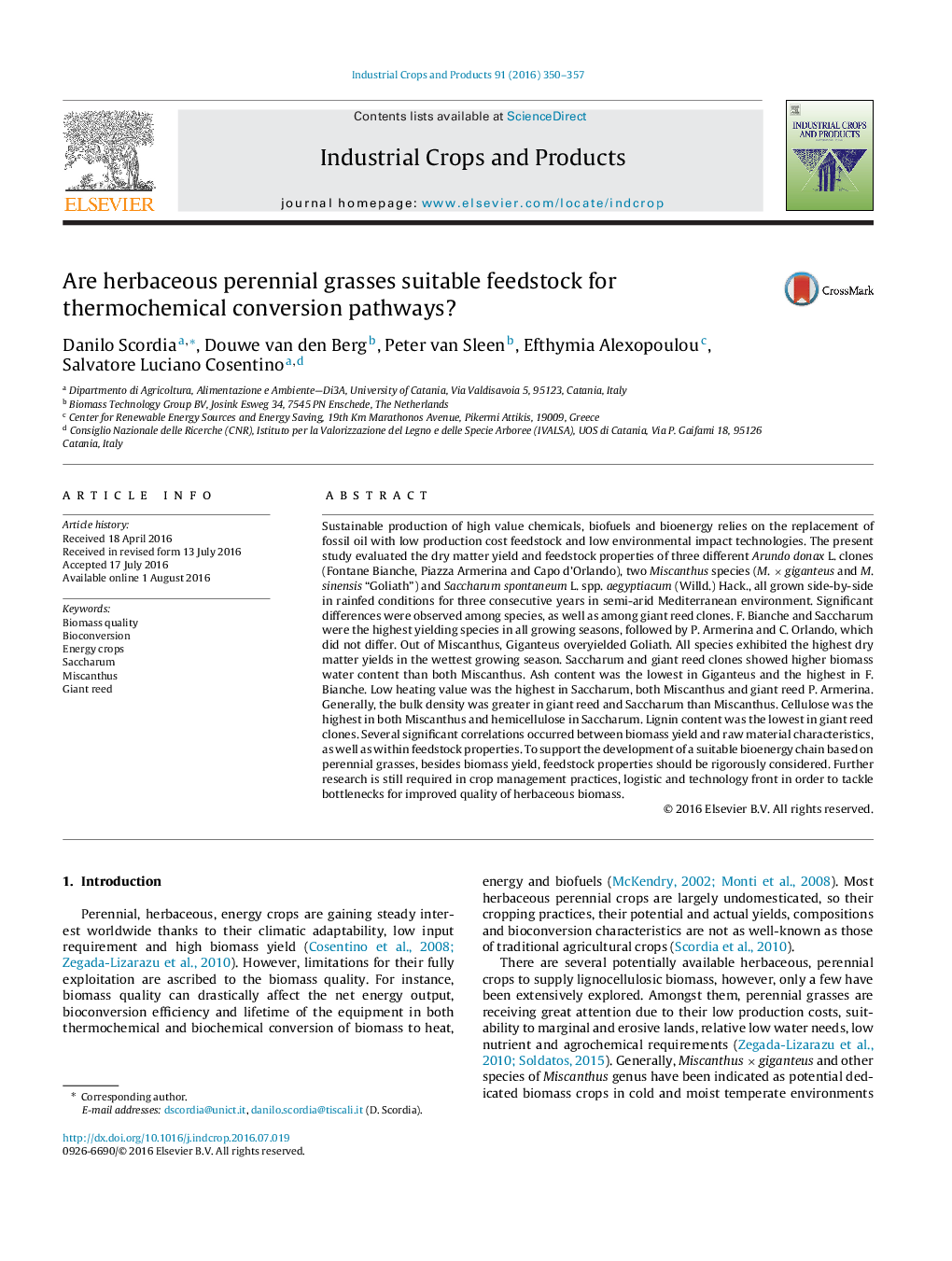| کد مقاله | کد نشریه | سال انتشار | مقاله انگلیسی | نسخه تمام متن |
|---|---|---|---|---|
| 4511996 | 1624819 | 2016 | 8 صفحه PDF | دانلود رایگان |
• Biomass yield and feedstock properties of perennial grasses were evaluated.
• There were differences in biomass yield and raw material composition.
• Significant correlations between yield and properties were found.
• The slagging index indicated a better suitability for low temperature conversion.
• Research is needed in agronomy, post-harvest and technology front to improve quality.
Sustainable production of high value chemicals, biofuels and bioenergy relies on the replacement of fossil oil with low production cost feedstock and low environmental impact technologies. The present study evaluated the dry matter yield and feedstock properties of three different Arundo donax L. clones (Fontane Bianche, Piazza Armerina and Capo d’Orlando), two Miscanthus species (M. × giganteus and M. sinensis “Goliath”) and Saccharum spontaneum L. spp. aegyptiacum (Willd.) Hack., all grown side-by-side in rainfed conditions for three consecutive years in semi-arid Mediterranean environment. Significant differences were observed among species, as well as among giant reed clones. F. Bianche and Saccharum were the highest yielding species in all growing seasons, followed by P. Armerina and C. Orlando, which did not differ. Out of Miscanthus, Giganteus overyielded Goliath. All species exhibited the highest dry matter yields in the wettest growing season. Saccharum and giant reed clones showed higher biomass water content than both Miscanthus. Ash content was the lowest in Giganteus and the highest in F. Bianche. Low heating value was the highest in Saccharum, both Miscanthus and giant reed P. Armerina. Generally, the bulk density was greater in giant reed and Saccharum than Miscanthus. Cellulose was the highest in both Miscanthus and hemicellulose in Saccharum. Lignin content was the lowest in giant reed clones. Several significant correlations occurred between biomass yield and raw material characteristics, as well as within feedstock properties. To support the development of a suitable bioenergy chain based on perennial grasses, besides biomass yield, feedstock properties should be rigorously considered. Further research is still required in crop management practices, logistic and technology front in order to tackle bottlenecks for improved quality of herbaceous biomass.
Journal: Industrial Crops and Products - Volume 91, 30 November 2016, Pages 350–357
